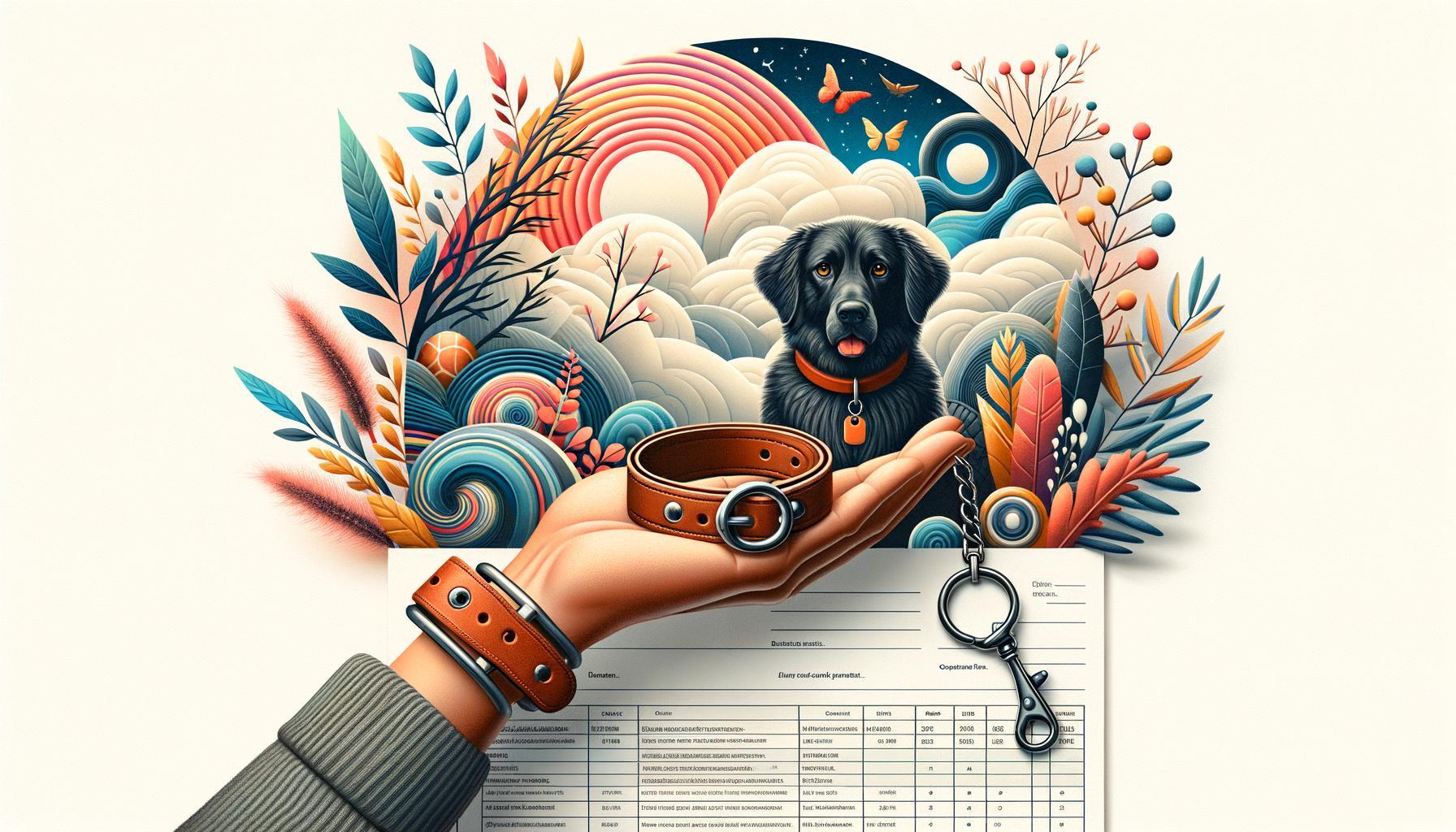In the sprawling tapestry of human existence, relationships have always formed the threads of our emotional-support/” title=”Top Small Dog Breeds for Emotional Support: Finding Your Perfect Companion”>emotional support. While family and friends have traditionally filled this role, a gentler companionship has been carving its own niche in the annals of human experience. “Tracing the Roots: The Start of Emotional Support Animals,” unearths the profound and often heartwarming chronicles of how animals, once merely our pets, have evolved into indispensable emotional anchors. This journey takes us through whispered tales of ancient societies, scientific revelations of the modern era, and the personal anecdotes that stitch them together, all culminating in a richer understanding of how creatures of fur, feather, and fin have mended the invisible wounds of the human soul. Join us as we delve into this symbiotic bond, where silent empathy speaks louder than words, and the soft nuzzle of a snout holds the power to heal.
Table of Contents
- Historical Context: From Service to Comfort
- Scientific Evidence: Understanding the Benefits
- Cultural Shifts: Changing Perspectives on Animal Companionship
- Regulatory Landscape: Navigating Legalities and Protections
- Mental Health Professionals: Roles and Recommendations
- Future Directions: Evolving Needs and Innovations
- In Retrospect
Historical Context: From Service to Comfort
In the past, animals primarily served functional roles such as farming, hunting, and protection. Ancient civilizations such as the Egyptians and Greeks employed animals in their daily lives, using horses for travel, dogs for hunting and guarding, and even cats to keep homes rodent-free. These animals were seen as crucial to survival, valued for their utility rather than as companions. **Service animals** like dogs were trained for specific tasks and were a part of the workforce, often considered tools rather than pets. What began as a practical alliance slowly evolved over time as humans began to recognize the potential for these animals to offer comfort and companionship beyond their traditional roles.
| Ancient Era | Role of Animals |
|---|---|
| Egyptians | Rodent control, hunting |
| Greeks | Travel, protection |
Fast forward to the modern-day, and the perception of animals has undergone a significant transformation. The transition began slowly as societal norms changed and mental health gained importance. Today, **emotional support animals (ESAs)** are integrated into our daily lives not just for their functional abilities but for their emotional support. They serve individuals with mental health issues by providing comfort and reducing anxiety, depression, and other emotional challenges. The shift from animals as mere helpers to integral parts of emotional well-being represents a broader understanding of the human-animal bond. This includes recognizing that their presence can significantly improve quality of life, marking a significant evolution from service to comfort.
Scientific Evidence: Understanding the Benefits
Researchers have delved deep into the neuroscience and psychology behind emotional support animals (ESAs) to unravel their profound effects on human well-being. **Studies indicate** that interactions with ESAs can trigger the release of positive neurotransmitters such as dopamine and oxytocin. These chemical changes can **lower stress**, **reduce anxiety**, and **enhance mood** in individuals dealing with various mental health challenges. Furthermore, animals can provide a **sense of security and routine**, contributing significantly to their owner’s emotional balance and stability.
- Reduction in symptoms of anxiety and depression: Simple acts such as petting or cuddling an animal can result in significant emotional relief.
- Increased social interaction: ESAs can encourage social behavior and communication, especially for those dealing with social anxiety disorders.
- Improved physiological health: Consistent companionship with an ESA has been correlated with lower blood pressure and heart rate.
Along with neurochemical benefits, there’s compelling evidence that emotional support animals can impact behavioral and cognitive patterns. They can aid in cultivating **mindfulness** and **present-moment awareness**. ESAs often help individuals develop **reliable routines** and **responsibilities**, improving overall life structure. While skeptics may question the therapeutic value, the empirical data supporting ESAs speaks volumes. In a comprehensive review, mental health professionals have consistently found that emotional support from animals can have lasting positive effects on diverse patient populations, as demonstrated below:
| Benefit | Impact |
|---|---|
| Reduced Anxiety | 85% of participants reported feeling calmer |
| Increased Physical Activity | 65% noted improved energy levels |
| Enhanced Social Interaction | 70% experienced better social connections |
Cultural Shifts: Changing Perspectives on Animal Companionship
Historically, animals have always played a crucial role in human life, serving as indispensable partners in farming, hunting, and protection. However, in recent decades, we have witnessed a significant paradigm shift—animals are increasingly becoming intertwined with human emotional well-being. This transformation is evident in the rise of **Emotional Support Animals (ESAs)**. These loyal companions provide solace and emotional stability, especially to individuals battling anxiety, depression, and other mental health challenges. With animals no longer limited to traditional roles, their emotional significance is now being recognized and embraced across diverse cultures.
The journey towards this acknowledgment can be traced back to various cultural shifts, driven by scientific advancements and changing societal norms. The symbiotic relationship between humans and animals has transcended practical utility to embrace emotional support. **Key Factors Influencing This Shift** include:
- Medical Research: Studies highlighting the therapeutic benefits of animal companionship.
- Legislation Changes: Laws and regulations evolving to recognize and support ESAs.
- Societal Acceptance: Growing awareness and acceptance of mental health issues.
| Factor | Impact |
|---|---|
| Medical Research | Validated emotional benefits of animal companionship |
| Legislation Changes | Enhanced support for individuals with ESAs |
| Societal Acceptance | Reduced stigma around mental health issues |
Regulatory Landscape: Navigating Legalities and Protections
As emotional support animals (ESAs) have become increasingly common, understanding the **regulatory framework** surrounding them is crucial. Navigating the varying laws can be complex due to differences between federal, state, and local regulations. On a federal level, the Fair Housing Act (FHA) and the Air Carrier Access Act (ACAA) are pivotal, offering specific protections. The FHA allows individuals to keep ESAs in housing units with no-pet policies, while the ACAA, though recently revised, provided guidelines for air travel exclusions. Recognizing the disparity in **local ordinances** is equally essential—municipalities may impose particular licensing, registration, or behavior requirements.
For a clearer understanding, here’s a breakdown of some key provisions under different governing bodies:
| Governing Body | Provision |
|---|---|
| Fair Housing Act | Pets allowed in no-pet housing |
| Air Carrier Access Act | Excludes ESAs from cabin travel (recently revised) |
| Local Ordinances | Licensing, registration, and behavior standards |
Individuals should be proactive in understanding these laws, as **compliance** is essential for safeguarding both the rights of ESA handlers and the broader public. Familiarity with requirements like **documentation** from healthcare professionals and ensuring the animal’s training can help navigate this intricate landscape effectively.
Mental Health Professionals: Roles and Recommendations
Mental health professionals play a pivotal role in the integration and acceptance of Emotional Support Animals (ESAs). **Psychologists** and **psychiatrists** often recommend ESAs as part of a holistic approach to mental health treatment. These animals provide a form of **non-judgmental companionship**, which can significantly reduce symptoms of anxiety, depression, and other mental health issues. **Therapists** usually assess the patient’s emotional needs and determine whether an ESA would be beneficial. They may write letters to help individuals obtain certification for their emotional support animals.
**Social workers** and **counselors** also advocate for ESAs by educating their clients about the potential benefits. They assist in the **application process** and provide resources for proper animal care. These professionals ensure that both the emotional and physical health of the client and the animal are taken care of. Below is a brief overview of the types of mental health professionals involved and their roles:
| Role | Responsibilities |
|---|---|
| Psychologist | Evaluates mental health, recommends ESAs, provides certification letters |
| Psychiatrist | Offers medical diagnosis, prescribes medication, suggests ESAs |
| Therapist | Determines emotional support needs, writes ESA letters |
| Social Worker | Educates about ESAs, assists with application process |
| Counselor | Supports emotional and mental well-being, recommends ESA |
Future Directions: Evolving Needs and Innovations
As we look toward the **future of emotional support animals (ESAs)**, several fascinating trends and technological innovations stand poised to redefine the landscape. Key among these are advancements in **genetic engineering**, which might soon allow for the customization of animals to enhance traits beneficial for emotional support. Imagine a world where specific breeds could be genetically tuned to maximize their stress-relief characteristics, offering tailored comfort to individuals with diverse emotional needs. Furthermore, the ongoing research into **animal-assisted therapy** is likely to yield new insights, pushing the boundaries of how these incredible companions can be integrated into therapeutic frameworks beyond mere companionship.
In addition to biological and therapeutic advancements, the integration of **technology-focused solutions** is set to revolutionize the way ESAs function. **Wearable tech for animals**, for example, is on the rise, paving the way for real-time health monitoring and behavior tracking. These devices can send alerts about significant changes in the animal’s well-being, allowing for prompt intervention and reducing stress for both the animal and owner. Moreover, **mobile apps designed for ESA management**—including scheduling veterinary visits, tracking training progress, and accessing support networks—are becoming indispensable tools for handlers. Below, we outline potential innovations and their benefits:
- Customized Genetic Traits: Enhanced emotional support through specialized genetics.
- Wearable Health Tech: Real-time monitoring increasing safety and interaction quality.
- Smart Mobile Applications: Streamlined management and support ecosystem.
| Innovation | Benefit |
|---|---|
| Genetic Engineering | Tailored traits enhance support |
| Wearable Devices | Better health monitoring |
| Mobile Apps | Efficient ESA management |
In Retrospect
As we close our journey through the heartfelt history of Emotional Support Animals, one thing remains clear: these steadfast companions have woven themselves into the very fabric of our lives. From early therapeutic dawning to the integral roles they play today, ESAs continue to evolve, echoing our enduring need for connection and comfort. As society and science interlace their understanding of emotion, may we honor these silent, yet profoundly impactful, advocates of well-being. The tale of Emotional Support Animals is far from over—it’s a living narrative, one that unfolds with every gentle paw-step and soothing purr, redefining the bonds of empathy and care for generations to come.







Leave a Reply